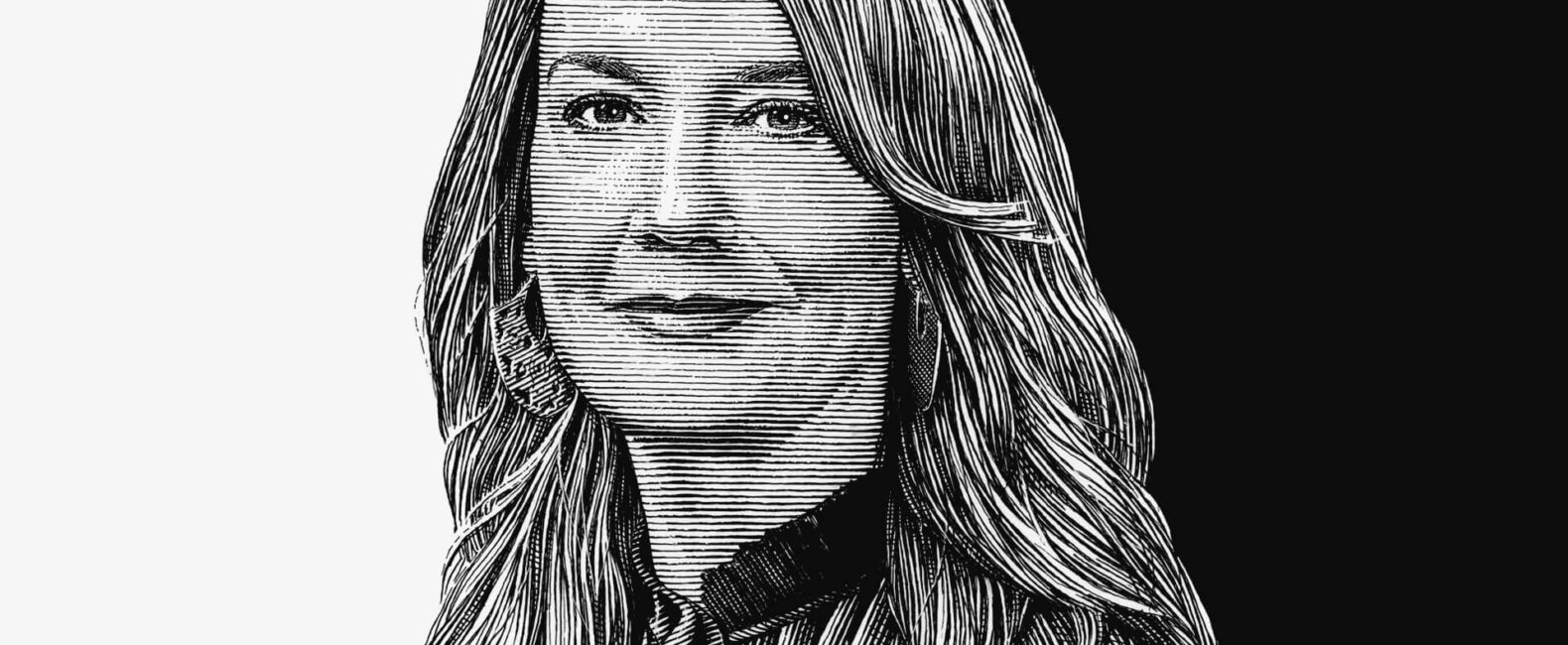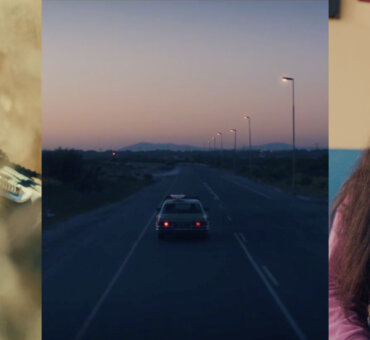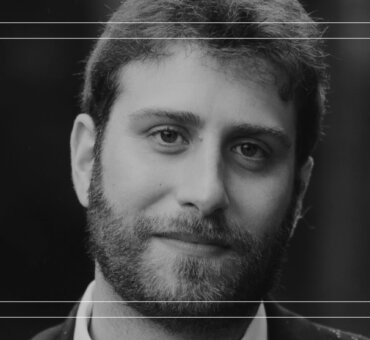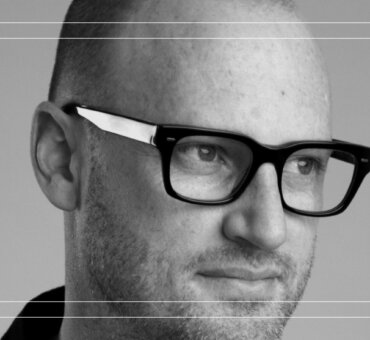Margaret Johnson’s credentials speak for themselves. As the Chief Creative Officer at Goodby Silverstein & Partners, she’s been redefining the ad industry for more than 21 years. Ad Age named her Executive of the Year in 2018, and over the years she has been named one of the industry’s top chief creative officers by Forbes, Business Insider, Adweek, and The Drum.
But, all of these accolades started from small beginnings: the yellow pages. One of the most innovative creatives of our time got her start by cold-calling agencies out of a phone book—and that’s no coincidence.
“I think that hungry feeling always works. If you have that hunger and drive, I think it usually works to your advantage,” Margaret told us.
That hunger and drive has been behind her work ever since, including her innovative work on Lessons in Herstory, an app that’s shedding light on the unsung women of history. Margaret chose this project as her most defining work in recent memory, and we asked her to explain why.
Here’s CCO Margaret Johnson on the one project that helped define her career.
Filmsupply: How did you get to where you are today?
Margaret Johnson: I went to the University of North Carolina, through the advertising sequence in the journalism school there. But, I took a graphic design class at Parsons School of Design, and it all clicked for me there. I realized that I was supposed to be on the art side, not the copywriting side. That’s how I decided to pursue being an art director.
I was trying to figure out how in the world I was going to get a job in advertising. Before I left Parsons in New York, I went into a telephone booth and ripped the advertising section out of the yellow pages, and took it back with me to Chapel Hill.
I knew I needed to put a portfolio together, so I pulled the yellow pages back out and cold-called 50 different advertising agencies in New York, asking to speak to someone in the creative department to see where people put these portfolios together. They all pointed me to a school in Atlanta that was called the Portfolio Center. I went there, put a portfolio together, and then got a job.
Do you think your yellow pages strategy would work today?
No, because there aren’t any phone booths [laughs]. Maybe not that exact strategy, but I think that hungry feeling always works. If you have that hunger and drive, I think it usually works to your advantage.
What’s a project that’s really defined your career?
I think the one that’s had the most impact recently is a project called Lessons in Herstory. I have a daughter. She’s 11 years old. And we had done a panel called Daughters of the Evolution a couple of years ago at Cannes. As a part of that panel, we spoke with a lot of other CCOs in the industry along with their daughters. It was really about what it was like being a mom in advertising, and how that feels as a kid.
We had a lot of success with that panel, and my daughter and I actually turned it into a nonprofit. The first creative thing that we put out into the world is this project, Lessons in Herstory. It was really born out of a conversation with one of the strategists at Goodby Silverstein & Partners.
We were talking one day, and she said, “You know, I just saw a stat that only 11 percent of the stories in US history books are about women. Don’t you have a daughter?” I said, “Yeah.” And she said, “We should fix that.” We were off and running on the project from that point.
Do you think most worthwhile projects start with a problem?
One hundred percent. I think it should start with a problem. The whole mission for our nonprofit is helping our daughters create the world they want to live in. So that alone, our mission is to solve problems in the world and make their lives better. And it just provides focus, right? We like to focus on a problem. We always like to have an organizing idea, so things are really simple and easier to solve.
So, how did you go about solving this problem?
We created an augmented reality app. You can download it for free in the App Store. It’s really neat the way that it works. It’s so simple and seamless. If you hover over a picture of a famous man in a U.S. history book, like we’ll say Abraham Lincoln, an equally cool story about a woman at that same time will pop up through AR. You can learn all about what she did during that same time period. It’s really about the forgotten women of history.
Is it designed around a specific book?
We started with one book, but the good news is that there weren’t a lot of different photographs of these famous men. So, a lot of U.S. history books use the same photos. While it’s really designed around one book, it actually works in a lot of different situations.
How challenging was it to develop the concept?
Well, that’s the interesting thing. If you look in the front of any history book, you’ll see that they’re on their 25th edition or whatever. We knew that going the traditional route, to try to change the educational curriculum, was probably not going to happen. It was unrealistic because it’s always evolving and being updated.
We have an in-house innovation lab at Goodby that we call GS&P Labs. I went to the innovation group and said, “We can’t change this curriculum in the book, but it has to be a way to change it with technology.” They immediately gravitated towards doing something in AR. And it was really important to me that the technology be easy for children to use, so we focused on making it work really simply.
What sort of reaction did it receive?
There are so many people who reached out. We launched the app at South by Southwest a year ago. After that initial launch, it got picked up by tons and tons of different organizations, and people were reaching out to me from all over the world. It taught me that there’s an appetite to, in this case, set history straight.
We got constant questions. Does this work in other languages? How can I get this in my country? Can I do it for my younger child’s history book? There was just a real appetite for change. And we pretty quickly figured out that, and this is something that we’re working on now, that we needed to get it out of the history book. We’re working on how to create a digital platform that can reach more people in more places.
What do you think a younger creative in your industry could learn from Lessons in Herstory?
First, there’s nothing more rewarding than a project like this. I can tell you that. If I were going to give advice to young creatives, I’d say don’t be afraid of learning new technologies, but more importantly, you have to make sure that it’s connected to a deeper truth. In this case, there was an injustice woven into our culture, and we knew we could help change it.
Where do you see the project going from here?
It took off like wildfire, but the challenge was that not everyone had this one history book that we started with. We need to quickly pivot to try to figure out how we can make it bigger. We’re not there yet. We’re in the process of talking to different partners about how to expand it. Do we partner with someone like Google or Wikipedia? Do we partner with the Smithsonian and take it into the portrait galleries?
There’s a lot more technology out there. That’s for sure. I think things are just changing so quickly. That’s probably the most difficult thing. I don’t know if it’s any harder than it’s ever been, but it’s just harder in a different way. It’s always going to be hard. But, to do anything that’s good and worthwhile, it’s going to be hard to get there.Co-Founder and Head of Creative at SoulPancake, Golriz Luna, knows the importance of working on projects that make a difference in the world — read about her essential tips on creating content with a purpose.






